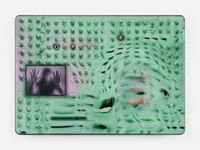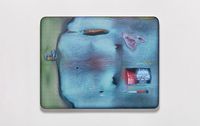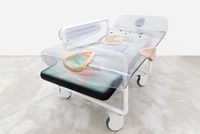Born in Boston, Massachusetts (1951), Hsu's formative years were in Zurich (Switzerland), Ohio, Wisconsin, Virginia and New York. Hsu had his first one-person show as a teenager in Virginia, where his paintings were exhibited throughout the region. He studied architecture at the Massachusetts Institute of Technology where he received his B.S.A.D. in 1973 and M.Arch. in 1975. While at MIT, he studied film at the Carpenter Center, Harvard University. He moved to New York in 1979, where he currently resides. Hsu first showed in New York at the Pat Hearn Gallery. Since 1985, Hsu has shown extensively in the US, Europe and Mexico with works in many public and private collections. From 1988-90, Hsu lived and worked in Cologne, Germany.
Read MoreFrom 2013-2016, Hsu maintained a studio in Shanghai, China, where he worked on a project using historical photographs discovered in photo albums of his extended family. Much of the artist's work has attempted to convey an embodied technology. Hsu's interest in technology has not been in the use of a particular apparatus but the perception of a technological affect. His work has included paintings, interactive digital media projections, and sculpture.
Selected public collections include Metropolitan Museum, New York, Centre Pompidou, Paris, Museum fur Moderne Kunst, Frankfurt am Main, High Museum, Atlanta, Terra Museum, Mexico City, Los Angeles Museum of Contemporary Art, Los Angeles, Museum of Contemporary Art, North Miami, and the Weisman Museum, Minneapolis. Hsu has served as a Member of the Board of White Columns and a Governor of the Skowhegan School of Painting and Sculpture. Until recently, Hsu has been a Professor of Visual Arts at Sarah Lawrence College, and a visiting professor at Pratt Institute and Harvard University. He currently lives and works in New York.
Text courtesy Empty Gallery.







